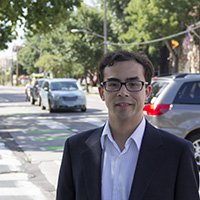Max-pressure traffic signal timing: integrating theory and practice
a Warren Distinguished Lecture with Michael Levin, Civil, Environmental, and Geo- Engineering, University of Minnesota
Abstract
Traffic signals are major bottlenecks for urban networks, and traffic signal timing has been studied for decades. However, in 2013, a new paradigm of max-pressure signal timing was introduced, which uses a Markov chain store-and-forward queueing model of traffic flow to mathematically prove that max-pressure control achieves maximum throughput of vehicles. This throughput optimality is shown for a network of max-pressure intersections, not just for individual intersections. As an added benefit, max-pressure control is very computationally easy to implement. Several important theoretical and practical questions remain before max-pressure control can be adopted for real traffic. The purpose of this research is to address some of these questions while preserving the mathematical throughput-optimality property as much as possible. Levin demonstrates how max-pressure control can be modified to provide explicit pedestrian access while retaining the maximum throughput properties. Levin further investigates the throughput properties when max-pressure control is used for a subset of intersections, and develop a way of optimizing the intersection selection. He also conducted microsimulation studies of max-pressure control in seven intersections in two corridors, with detailed data provided by Hennepin County, with encouraging results that may lead to experiments on Minnesota roads.
